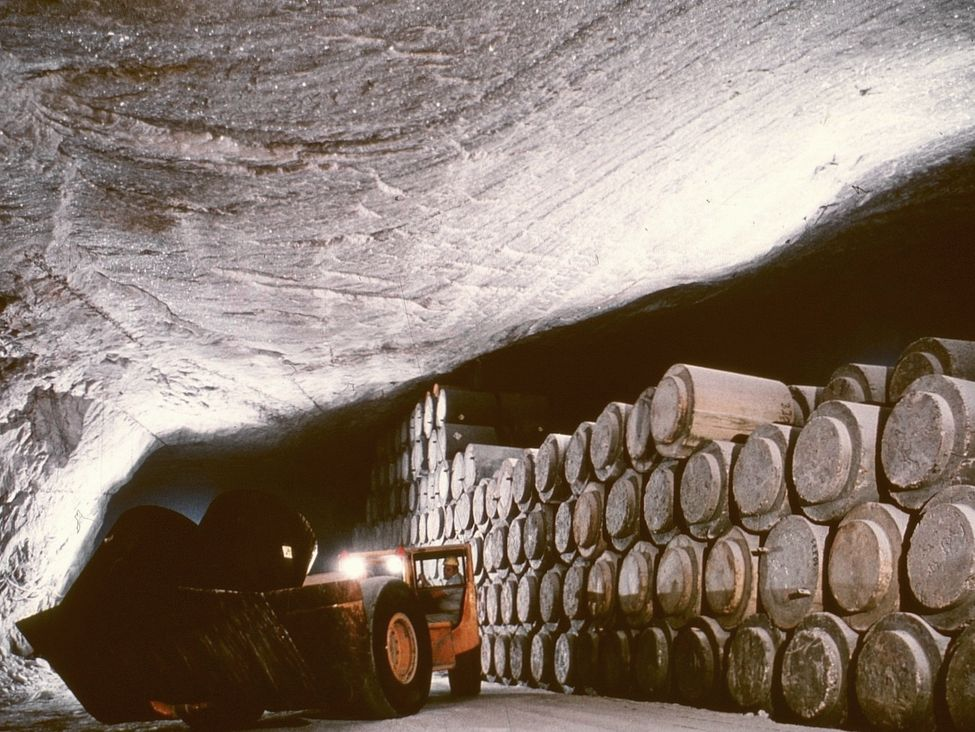 An International Atomic Energy Agency (IAEA) Integrated Review Service for Radioactive Waste & Spent Fuel Management, Decommissioning & Remediation (ARTEMIS) team said Germany demonstrated commitment to continued development of its national radioactive waste management (RWM) programme since a previous review in 2019. The review team noted that the majority of the initial recommendations and suggestions had been addressed and advised Germany to apply a consistent approach across future activities related to cost assessment of the RWM programme.
An International Atomic Energy Agency (IAEA) Integrated Review Service for Radioactive Waste & Spent Fuel Management, Decommissioning & Remediation (ARTEMIS) team said Germany demonstrated commitment to continued development of its national radioactive waste management (RWM) programme since a previous review in 2019. The review team noted that the majority of the initial recommendations and suggestions had been addressed and advised Germany to apply a consistent approach across future activities related to cost assessment of the RWM programme.
The ARTEMIS follow-up mission was carried out at the request of the Federal Ministry for the Environment, Nature Conservation, Nuclear Safety & Consumer Protection (BMUV) to review the implementation of the findings identified during the initial ARTEMIS mission in 2019. It was hosted by Gesellschaft für Anlagen- und Reaktorsicherheit gGmbH (GRS), Germany's central professional organisation in the field of nuclear safety, in the city of Cologne.
The follow-up mission covered all aspects and topics related to the development and implementation of the RWM programme. It focused on the national policy and strategy for the management of radioactive waste, application of selection criteria in the identification of a site for a disposal facility for high level radioactive waste, and cost assessment for the RWM programme. It also reviewed the national plan and cost estimation for the retrieval of waste from the ASSE II former salt mine.
Mission team leader Patrice François, Senior Expert in Radioactive Waste Management & Decommissioning at the Institute for Radiological Protection & Nuclear Safety in France, said: “Germany, as the first country to call for a follow-up ARTEMIS mission, has shown its dedication to meet the findings from 2019 and strong commitment to transparency of communications, in the interest of improving standards of safety in implementing its national programme for radioactive waste management.”
Germany has made the decision to stop generating electricity from nuclear power plants. The three remaining operational NPPs were planned to be shut down by the end of 2022. However, due to the current energy crisis these reactors, with a total net capacity of 4000 MWe, they will remain in operation until 15 April 2023. In view of Germany’s previously large nuclear power programme with a total of 33 reactors, including the three in operation, a significant amount of radioactive waste will be generated by decommissioning activities. The waste will need to be stored until it can be safely disposed.
Currently, Germany does not have a receiving radioactive waste disposal facility. The Morsleben disposal facility has stopped receiving waste and is being closed. A new disposal facility for low and intermediate level waste is being constructed at the site of former iron ore mine Konrad. A nationwide search has begun to identify a site for a disposal facility for high level radioactive waste.
The mission included interviews and discussions with representatives of BMUV, GRS, Federal Office for the Safety of Nuclear Waste Management (BASE), Federal Company for Radioactive Waste Disposal (BGE), Company for Storage (BGZ), as well as a site visit to the Biblis NPP, a pressurised water reactor in permanent shutdown, to observe the status of the dismantling and the management of radioactive waste.
The team found that Germany has successfully implemented many recommended actions from the 2019 mission. Of the three recommendations and 12 suggestions identified in the initial mission, two recommendations and two suggestions require further development, including:
- Updating the cost assessment for the national waste management programme in the Cost Report, based on a consistent approach across all activities, including waste retrieval from Asse II mine.
- Analysing risk and uncertainty when updating the cost assessment for all public sector components of the radioactive waste and spent fuel management programme.
- Assessing whether the geosphere requirements for non-heat generating waste are different from those for high level waste and, if they are, taking them into account in the application of disposal facility siting criteria.
- Making greater use of the radioactive waste inventory to monitor changes in the inventory over time and demonstrate waste minimization.
Gerrit Niehaus, Director General for Nuclear Safety & Radiation Safety at BMUV said: “We are happy that we were able to demonstrate that we made progress, that most of the 2019 findings could be closed and that no new ones were identified. The findings that remain open will be used to guide us on our way to further improve the safe management of radioactive waste in Germany, our national programme and our communication.”
The final mission report will be provided to the Government in about two months.
Image: Drums of radioactive waste stored in the Asse II mine (courtesy of Bilfinger)






